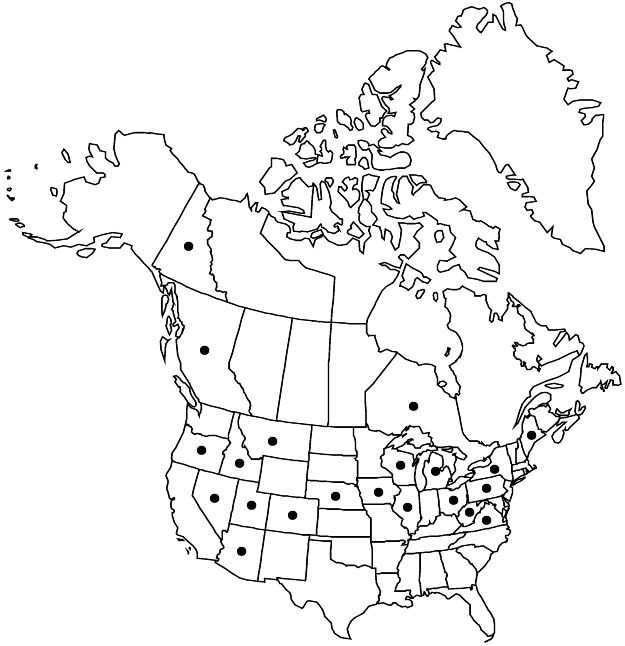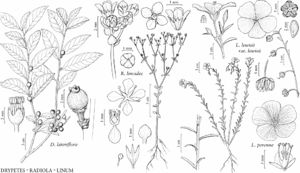Difference between revisions of "Linum perenne"
Sp. Pl. 1: 277. 1753.
FNA>Volume Importer |
FNA>Volume Importer |
||
| Line 56: | Line 56: | ||
|publication year=1753 | |publication year=1753 | ||
|special status=Introduced;Selected by author to be illustrated | |special status=Introduced;Selected by author to be illustrated | ||
| − | |source xml=https://jpend@bitbucket.org/aafc-mbb/fna-data-curation.git/src/ | + | |source xml=https://jpend@bitbucket.org/aafc-mbb/fna-data-curation.git/src/f6b125a955440c0872999024f038d74684f65921/coarse_grained_fna_xml/V12/V12_632.xml |
|genus=Linum | |genus=Linum | ||
|section=Linum sect. Linum | |section=Linum sect. Linum | ||
Revision as of 18:19, 24 September 2019
Herbs, perennial, 20–100 cm, glabrous. Stems ascending or erect, usually unbranched. Leaves: blade linear or linear-lanceolate, 5–20 × 1–3 mm. Inflorescences much-branched panicles. Pedicels spreading, 5–25 mm. Flowers heterostylous; inner sepals ovate-lanceolate or ovate, 4.5–5.5 mm, margins glabrous, apex obtuse, outer ones lanceolate or ovate-lanceolate, 3.5–4.5 mm, narrower than inner ones, margins glabrous, apex acute or acuminate; petals blue, obovate or obovate-lanceolate, 10–25 mm; stamens 5 mm, anthers 2 mm (long-styled morph) or stamens 6.5 mm, anthers 1.8 mm (short-styled morph); styles distinct, 8 mm (long-styled morph) or 2.5 mm (short-styled morph); stigmas capitate. Capsules subglobose, 5–7 mm diam., apex acute to obtuse, segments persistent on plant, margins ciliate or not. Seeds 3–4.2 × 1.7–2 mm. 2n = 18.
Phenology: Flowering Mar–Aug.
Habitat: Disturbed areas.
Elevation: 100–1000 m.
Distribution

B.C., Ont., Yukon, Ariz., Colo., Idaho, Ill., Iowa, Maine, Mich., Mont., Nebr., Nev., N.Y., Ohio, Oreg., Pa., Utah, Va., W.Va., Wis., Eurasia, introduced also in Mexico (Sonora).
Discussion
Most collections in North America identified as Linum perenne are most likely L. lewisii var. lewisii (D. J. Ockendon 1971; C. M. Rogers 1984). According to Ockendon, L. perenne is often confused with L. austriacum Linnaeus in Europe; its exact native distribution is not known.
Selected References
None.
